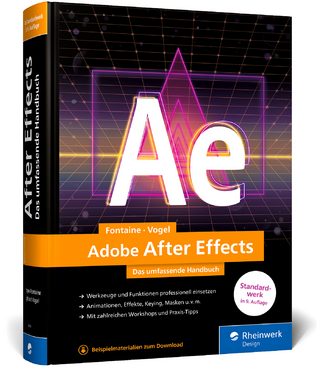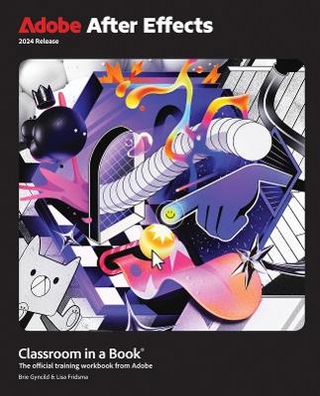
Story Structure and Development
CRC Press (Verlag)
978-1-032-78650-6 (ISBN)
- Noch nicht erschienen (ca. März 2025)
- Versandkostenfrei innerhalb Deutschlands
- Auch auf Rechnung
- Verfügbarkeit in der Filiale vor Ort prüfen
- Artikel merken
Professor Craig Caldwell’s Story Structure and Development provides a clear and practical approach to understanding the essentials of storytelling. This book distills fundamental elements, principles, and structures, explicitly tailored for animators, game designers, VFX artists, and XR creators, so they can seamlessly integrate these concepts into their work. It is a comprehensive guide, enriched with extensive insights and advice from industry professionals.
The thoroughly revised and updated Second Edition introduces new film and animation examples alongside over 200 vibrant images designed with today’s digital content creators in mind. Organized to enhance accessibility, this edition offers a structured approach to the story fundamentals critical to today’s movies, animation, games, and XR. Readers will gain valuable insights into the universal patterns of narrative, gaining a deeper understanding of the core story concepts that directors and producers often emphasize with the phrase, "It’s all about story."
Key Features:
Comprehensive Story Structure: This approach consolidates universal story frameworks across the digital media industry into a single, accessible text.
Visual Learning: Features a wealth of illustrations and visuals that reinforce and clarify key concepts for visual learners.
Flexible Organization: It is structured to allow readers to access sections in a non-linear manner, either for individual reference or adaptation to various teaching methodologies.
Craig Caldwell is USTAR (Utah Science Technology and Research) professor in digital media, University of Utah. Having worked for Walt Disney Feature Animation and Electronic Arts games he has extensive experience in the industry approach to creating animation and games. Caldwell has been a co-founder and arts director for one of the top-ranked interactive games programs, Entertainment Arts and Engineering (EAE – University of Utah) with its numerous award winning games. He has served as head of the largest film school in Australia—Griffith Film School, Griffith University as well as chair of the Media Arts Department and associate director of the New Media Center at University of Arizona; as well as having been selected as a DeTao Master, Institute of Animation and Creative Content on the SIVA campus, Shanghai, China. Caldwell speaks frequently on story at major conferences such as SIGGRAPH, FMX, Sundance, CCG Expo, and Mundos Digitales. He earned his PhD from the Advanced Computing Center for Art and Design, Ohio State University.
Part 1 – Story Structure (Plot)
Chapter 1 Plot – the structure
What is a Dramatic Story?
Plot… what is it?
3 Act Structure
Multiple Acts
Plot Shapes
Plot Structures – The Short
Structural Comparisons
What do all plots have in common?
References
Chapter 2 Setup Act I (beginning)
Types of Setup
The Opening Image
Exposition (what does the audience need to know?)
Show Don’t Tell Rule
Inciting Incident (starting the story)
What’s at Stake (why an audience cares)
Story Questions (keeps the audiences watching)
End of Act I – New Story World
References
Chapter 3 Conflict Act II (the middle)
What happens in the Middle?
Increasing Conflict
Types of Conflict
Turning Points/Reversals
Cause and Effect (connected events)
End of Act II – Crisis
References
Chapter 4 Resolution Act III (end)
Endings – for the Viewer
Climax
Resolution
Meaning
References
Chapter 5 Plot Driven Stories
Story Genres
Story Types
Only a few basic Plots
References
Part 2 – Story Principles
Chapter 6 Story Components
Is Conflict necessary?
Premise – What is the Story about?
Theme – What does it mean?
Emotion – Purpose of dramatic story
The Setting (situation)
References
Chapter 7 Story Techniques
Narrative Questions
Surprise
Suspense
Comedy
Foreshadowing – Creating anticipation
References
Chapter 8 Interactive Narratives
Why Story in Games/XR?
Story versus Narrative
World Storytelling – Narrative as Story World
Immersive Story(telling)?
AI & Human Storytelling?
References
Part 3 – Bringing Characters to Life
Chapter 9 Character
Character - Why do we watch?
Archetypes vs. Stereotypes
Create Finding your Characters
Backstory vs. Character Profile
Identification/Empathy
Love your Characters
Villains
References
Chapter 10 Character Motivations
What does a character want?
Need - What a character really, really wants
Conflict reveals character
Character Flaws (Fatal)
Setting as Character
References
Chapter 11 Character Driven Stories
Character Stories
Fear - the Inner Journey
Choices – it is why we watch
Types of Change
Character Arc
Unity of opposites
References
Part 4 – Storytelling (the development)
Chapter 12 Generating Ideas
Brainstorming Ideas
Three Types of Research
Asking… What If?
Clichés – good or bad?
Point of View – Whose story is it?
References
Chapter 13 Development
The Development process
Borrow, Adapt, Steal
Problems are at the beginning
Know your Ending
Dialogue – its functions
Making the story… Short
References
Chapter 14 Viewer (Audience/Player)
Meeting Viewer’s Expectations
Who know What? When?
Gaps – the unexpected
Believability
Are Coincidences OK?
References
Chapter 15 Subverting the Story Formula
Disrupting Story Expectations
Breaking Genre Tropes & Plots
Hybrid Genres
Eastern vs. Western Storytelling
References
| Erscheint lt. Verlag | 3.3.2025 |
|---|---|
| Zusatzinfo | 6 Line drawings, color; 8 Line drawings, black and white; 181 Halftones, color; 11 Halftones, black and white; 187 Illustrations, color; 19 Illustrations, black and white |
| Verlagsort | London |
| Sprache | englisch |
| Maße | 178 x 254 mm |
| Themenwelt | Kunst / Musik / Theater |
| Informatik ► Grafik / Design ► Film- / Video-Bearbeitung | |
| Informatik ► Software Entwicklung ► Spieleprogrammierung | |
| ISBN-10 | 1-032-78650-7 / 1032786507 |
| ISBN-13 | 978-1-032-78650-6 / 9781032786506 |
| Zustand | Neuware |
| Informationen gemäß Produktsicherheitsverordnung (GPSR) | |
| Haben Sie eine Frage zum Produkt? |
aus dem Bereich


